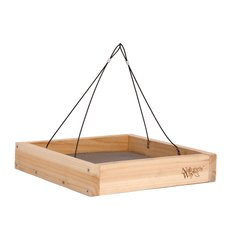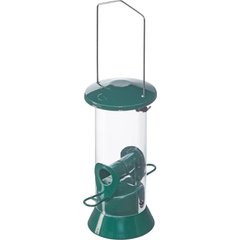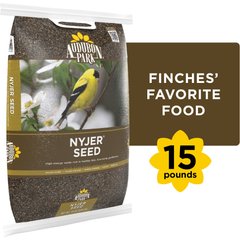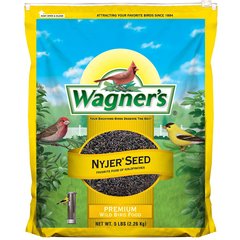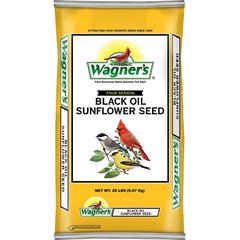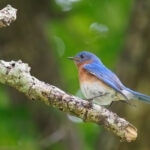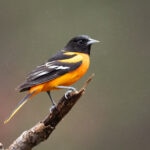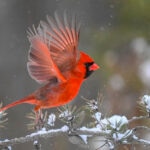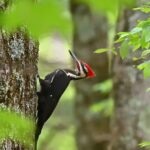What Is a Finch? Learn About These Small Songbirds
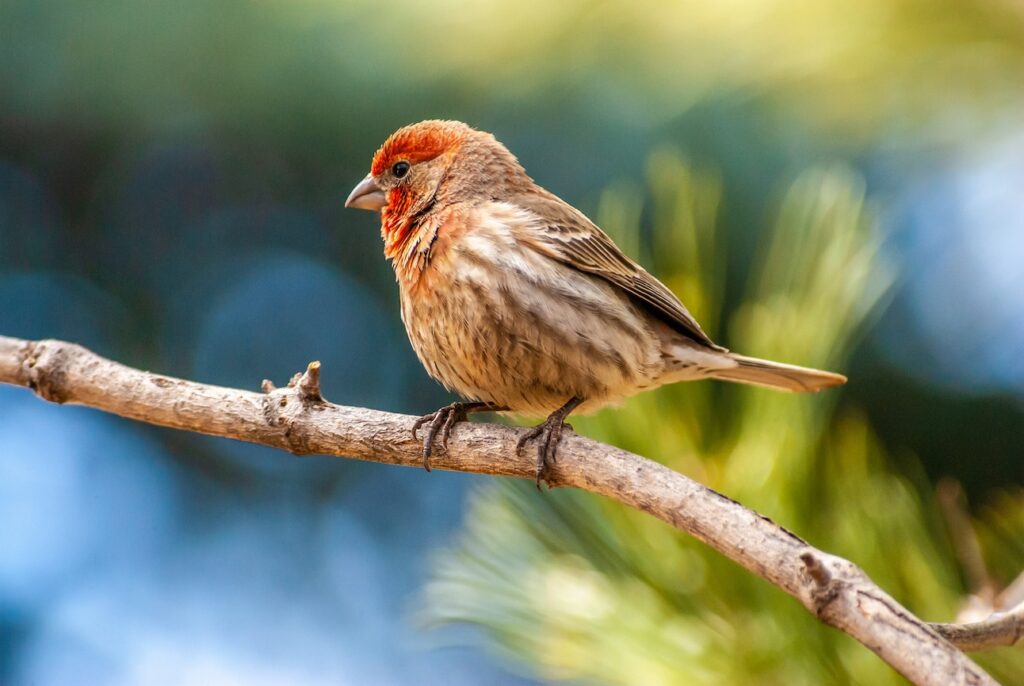
Photo by JeffGoulden/E+ via Getty Images
Finches are everyday birds you might spot in your backyard, at the park, or during a hike in the forest. Because there are so many types of finches, you might even see these birds more often than you think.
But what is a finch, exactly? Let’s learn more about the habits and characteristics of these cheery and active little birds.
Key Takeaways
- Finches are small, social birds found throughout the U.S.
- There are more than 200 “true” finch species throughout North America, but many small birds, like cardinals, meet the physical requirements to be a finch despite their classification.
- Some of the most common types of finches are the American goldfinch, the house finch, and the purple finch.
- You can attract finches to your yard with seed feeders and finch-friendly landscaping features, like open spaces and water features.
What Is a Finch?
There are more than 200 species of birds in the Fringillidae family, and these birds are known as “true finches.”
But David Wiedenfeld, PhD, senior conservation scientist at the American Bird Conservancy, says what makes a bird a finch isn’t limited to one species or family. Shared traits—rather than simply genetics—are what primarily qualify a bird to be called a finch.
For example, “almost all of the birds we call finches have short, deep, usually conical bills. These bills are adapted to a diet of seeds, often very hard seeds,” Dr. Wiedenfeld says.
Another common characteristic of finches is their social nature.
“Finches tend to be rather social and [are] often found foraging in groups of the same species, particularly at bird feeders,” says Noah Perlut, PhD, professor in the School of Marine and Environmental Programs at the University of New England.
The birds will often entertain you, too. “Most male finches are very active songsters, belting out tones throughout spring and into late summer, sometimes even in winter,” Dr. Perlut says.
Types of Finches
Of the 200 “true finch” species, there are 17 North American species. Some of the most common types you can spot in your neighborhood are:
- American goldfinch
- Cassin’s finch
- House finch
- Purple finch
- Lesser goldfinch
- Pine siskin
- Evening grosbeak
While there are a handful of common true finch species in the U.S., there are many more species that meet the basic criteria to be called a finch, Dr. Wiedenfeld says.
For example, the Northern cardinal is technically a finch, but it isn’t called that. The same goes for other birds like the indigo bunting, painted bunting, and many types of sparrows—their bill shape, diet, and social structure are all finch characteristics.
“So, there really are a lot more ‘finches’ here than what we count with that name,” says Dr. Wiedenfeld.
Common Pet Finches
Some finch species are commonly kept as pet birds. Pet finches include:
- Zebra finches
- Rainbow finches/Gouldian finches
- Java sparrows
- Red-headed finches
- Canaries
Where Do Finches Live?
Because there are so many types of finches and so much diversity within those types, you’re likely to have at least a few finch species that live around you for at least part of the year. These birds are found throughout the U.S., depending on the species and the time of year.
Finches thrive on a diet of seeds, and Dr. Wiedenfeld says they tend to be most common in dry climates where plants mainly produce seeds, not fruit. You’re most likely to spot these little birds in areas like open grasslands, shrubby fields, evergreen forests, or arid deserts.
Do Finches Migrate?
It depends! Seasonal migration is part of life for some finch species, while others stay put year-round. For example, the common house finch—frequently seen across most of the U.S.—doesn’t really migrate, so you’ll spot these birds during any season.
Whether or not a finch migrates depends more on their home’s climate than their species. For instance, Dr. Wiedenfeld says American goldfinches in northern climates will migrate in the fall to warmer weather in the Gulf Coast states or northern Mexico.
At the same time, American goldfinches in states with more moderate winter weather—where the snow isn’t too abundant or doesn’t hang around too long—will stay put. “They may move around in the area, from field to field or neighborhood to neighborhood, but they don’t go far,” Dr. Wiedenfeld says.
And here’s something else that’s interesting: Some finches look different in the winter and summer. The male American goldfinch, for example, trades its bright, sunny appearance for a duller, muted plumage every winter.
So, you might think a particular finch species has migrated when they’ve actually stayed put but changed their feathers.
What Do Finches Eat?
Seeds are the most common food source for finches. Their beak is specially designed to make quick, efficient work of cracking the seed casing and separating the kernel.
Some finches also eat insects, particularly during breeding season, Dr. Perlut says.
How To Attract Finches
The best finch bird feeders are well-stocked and in the right habitat. Follow these expert tips to attract these chipper little birds.
Finch Feeders
Since seeds are the mainstay of a finch’s diet, use a seed feeder to attract finches.
Regarding the best bird feeders for finches, Dr. Perlut says, “The larger finch species flock to platform feeders, while smaller species like both platform and tube feeders.”
Recommended Products
Finches are often referred to as “dine-in” eaters, so expect to see them hang around at the bird feeder as they crack and eat the seeds inside.
The type of bird seed inside will make your feeder more attractive to specific types of finches.
- Smaller finches, like goldfinches, sparrows, and buntings, tend to gravitate to small seeds, including thistle (nyjer), coneflower, and grass.
Recommended Products
- Dr. Wiedenfeld says larger finches with bigger beaks, like house finches or cardinals, typically eat larger seeds. Black sunflower seeds are a big hit, and you can use a sunflower seed feeder or a raised platform feeder to serve up these larger seed varieties.
Recommended Product
Finch-Friendly Landscaping
“Finches tend to be open or edge habitat birds, not deep forest birds or lawn-and-pavement birds,” Dr. Wiedenfeld says. He suggests a yard or garden with a variety of open spaces combined with areas of taller flowers and shrubs.
To make your yard more attractive to finches, consider adding a water feature. A bird bath or a shallow pond with sloping edges will provide visiting birds with a convenient source of water for drinking and bathing. Keep the water fresh and clean to prevent the spread of disease.
FAQs About Finches
Are finches good birds to have around?
Finches are generally considered good birds to have around because these small birds bring a flutter of activity, attractive colors, and songs to your outdoor space.
As a bonus, they also might snack on insects that you would rather not see around—like termites, grubs, or spiders.
How do you tell if a bird is a finch?
“Finches are generally small and stout and often have shorter tails and robust beaks,” Dr. Perlut says. So to figure out if a bird is a finch, look for a characteristically round shape and a sturdy, pointed beak designed for cracking seeds.
Because there are so many different types of finches, you can’t rely on color as a determining factor. Finches can be muted shades of brown and tan to bright yellow, red, and blue—or some combination of shades.
What does a finch symbolize?
A finch is often associated with joy because these birds are known for their social nature and frequent singing.
Purple finch vs. house finch: What’s the difference?
It can be hard to tell if a bird is a purple finch versus a house finch, but differences in color and size can help make it clear which type of finch you’re looking at.
A male purple finch will have distinctly purple-pink or purple-red plumage across much of his body. A male house finch has more red or reddish-orange plumage, and it’s often more prominent around the bird’s head, neck, and chest, with brown streaks visible along the sides of the bird. (Not surprisingly, the house finch is also sometimes called a red finch).
It can be more challenging to spot the difference between female house finches and purple finches, since they have much more muted plumage than their male counterparts. In that case, you might rely a bit more on size and other physical attributes. Purple finches are larger than house finches, with a longer beak but a shorter tail.
